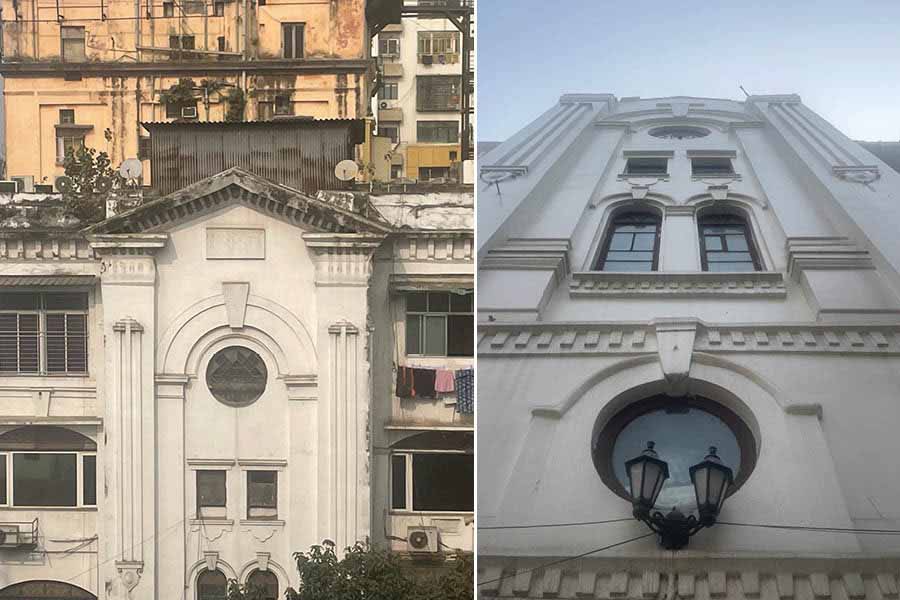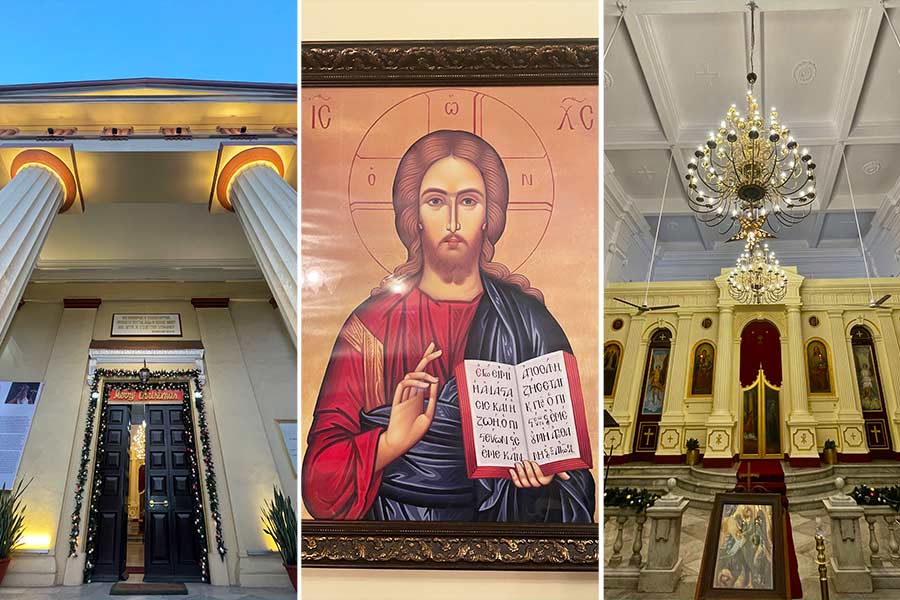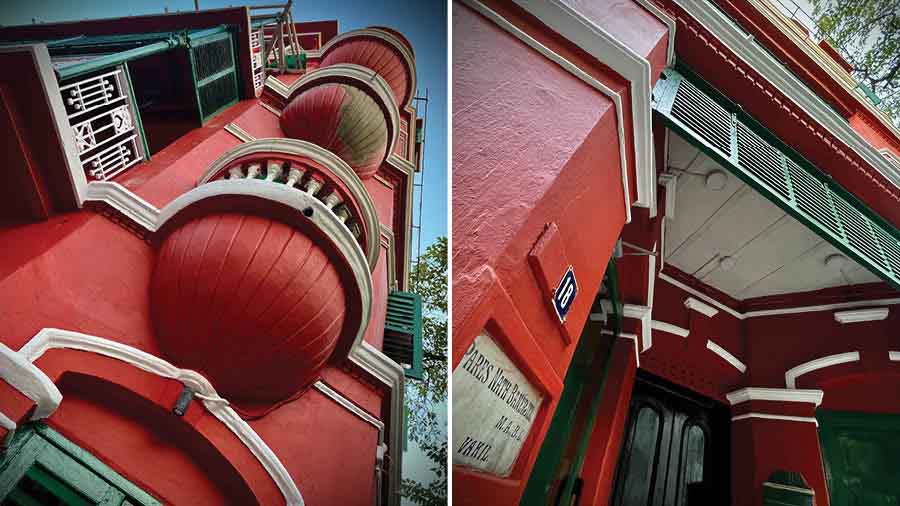Alexandra of Denmark was Queen of the United Kingdom and the British Dominions. As the wife of King-Emperor Edward VII, she was Empress of India from 1901 to 1910. She has an architectural relevance for a Calcutta that was once the jewel in the urban crown of the empire; a stately estate was named after her on Chowringhee, a couple of hundred metres from another stately mansion named after her husband.
Alexandra Court was built in the early part of the last century, largely for affluent British interests domiciled in the city. It was a contemporarised adaptation of an earlier generation of gated British residential facilities – multi-towered, multi-storeyed, residential section for domestic assistants and a sequence of covered car garages (a new residential feature considering that automobiles had been on the road for only about a couple of decades). For this space any later-day real estate company would offer the KMC a 60-storeyed proposal; the Alexandra Court of the early 1900s comprised 42 apartments. Just.
Assuming that five persons stayed per apartment and each home was supported by two domestic assistants, at peak apartment occupancy, Alexandra Court would have been home to no more than 300. A similar space today could accommodate 2,000. The word for this 20th-century stateliness is raeesi.
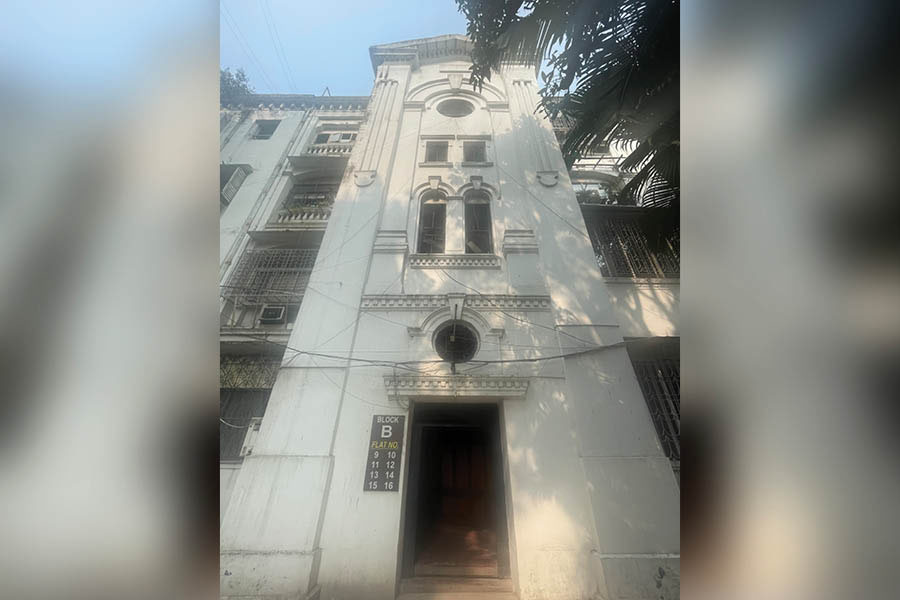
At peak apartment occupancy, Alexandra Court would have been home to no more than 300. A similar space today could accommodate 2,000
Alexandra Court was completely pre-rented at the blueprint stage itself (presumably). The estate was located at the cusp of White Town (the architectural character of the city transformed immediately after) so reached out to all sahibs struggling with core Calcutta accommodation. In providing the last White Town residential offering, it possibly over-compensated. The estate enjoyed an extensive frontage, so it provided access to breeze and sunshine. The road on which it stood was the most prominent in India’s capital city. The porous boundary comprised matki railings of the kind one sees on Red Road. There were multiple gardens within to ‘highlight the awe-inspiring wastefulness of the imperial master’.
Step inside. The fine-grilled lifts reminded one of an enlarged version of the Governor House equivalent. The staircases were teak wood. The ceilings were 14 feet and doors 10 feet. Each bedroom was the equivalent of an entire conventional apartment (400sq ft). One could luxuriate in an Alexandra Court bathroom (12 feet by 9 feet) thinking the world must be living this way until one was invited to the homes of friends. The drawing room was checkered marble. The red oxide dining room zameen was Mansion Polish-ed until the memsaab said, ‘Jolly splendid! The floor has begun to reflect the lights of the drawing room!’ The cast iron bathtub appetite would be slaked by polished brass geysers sustained by the city gas network. The closets were walk-in. The bed was usually set away from the wall because space was at a discount. The windows were multi-layered (glass plus wooden louvre plus net). The kitchen bricks were fireproof. The pane above the dining room window comprised an etched eagle with an extended tail.
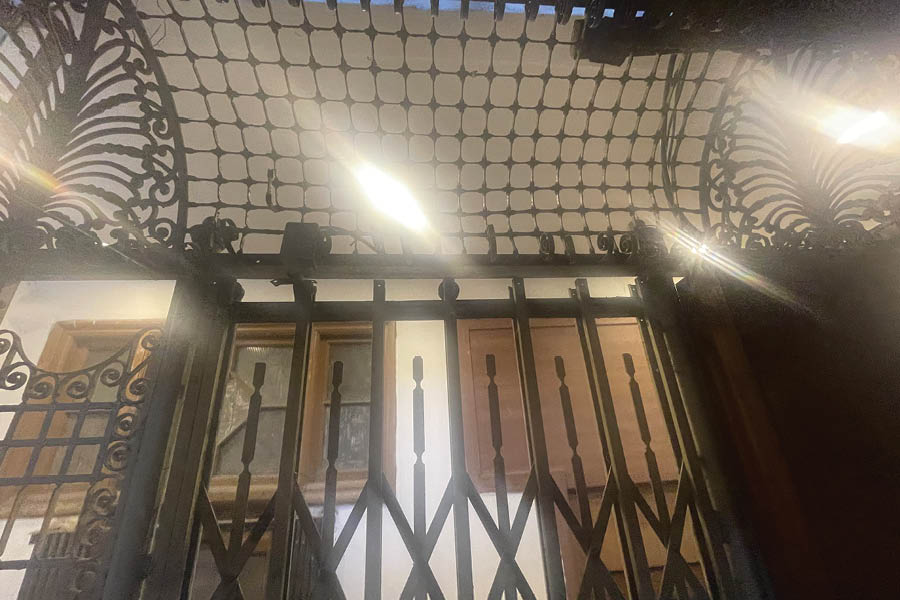
The fine-grilled lifts reminded one of an enlarged version of the Governor House equivalent
A one-time resident – her family stayed for more than 50 years – said that she realised just how much these windows had enriched her indoor experience only when the 1971 Bangladesh War made it mandatory to mask each with brown paper to prevent the construction from being identified by enemy aircraft (‘Suddenly it was like being boxed in’).
The best was the retractable punkah. The architect figured that in these large rooms, each room would need at least two fans for secular cooling. But electricity access was privileged. Not everyone could afford it. The architect responded ingenuously; he introduced a pulley-activated fan that could be moved linearly across the room. The residents did not have to move to sit under the fan; the fan did.
The one-time Alexandra Court resident I spoke to moved in with her family as a three-year old in the late ’60s. Her montage of memories of one of the grandest residential addresses in Calcutta is precious. “Architecture represents the concretisation of the expression of society and Alexandra Court was no different. The residents could not do without domestic help, but the latter had to remain unseen. The British arrived at an effective segregation: when you walk towards the rear of Alexandra Court, you will see a flight of stairs once dedicated only to domestic staff, leading them from the exits of the residences of their employers to their quarters (situated above the garages). Today, this would be considered a waste of precious real estate; more than a century ago, this was an important colonial residential lifestyle value-add. The master could not be seen with the servant. The segregation did not end there; the domestic assistants had their own entry and exit into Alexandra Court as well (from Bishop Lefroy Road). There was a possibility that anyone who was invited for a meal to Alexandra Court would probably not chance upon any ‘invisible staff’ except when the latter turned up to serve or remove the dishes. On the other hand, and ironically, the Alexandra Court frontage with the main road remained semi-porous – a contradictory architectural manifestation. Invisible segregation at one level and tentative visible engagement at the other.”
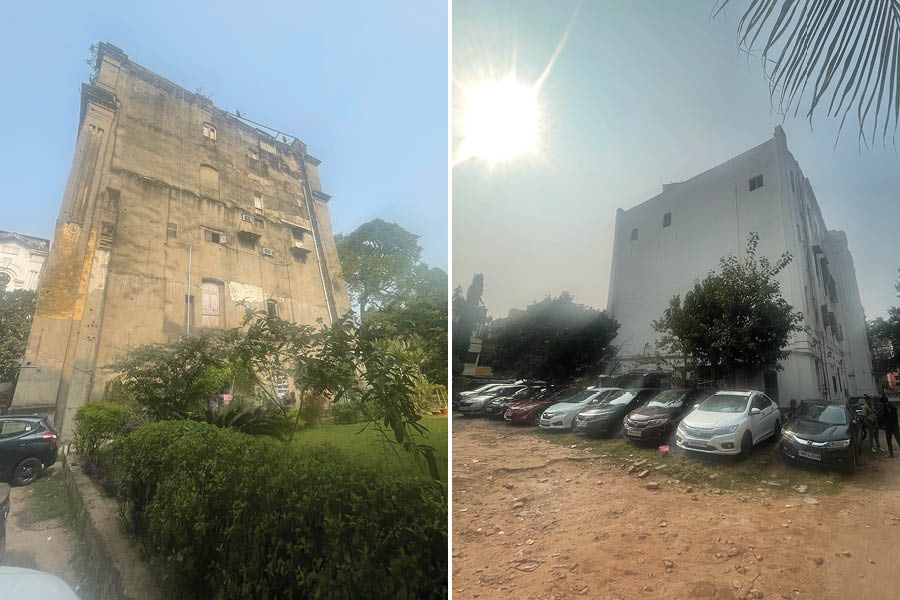
The estate enjoyed an extensive frontage… There were multiple gardens within to ‘highlight the awe-inspiring wastefulness of the imperial master’.
This would have been the outline of another privileged lifestyle had it not being for a social transition. In just five decades from the time Alexandra Court heaved its grilled gates wide open, the country experienced its most concentrated transformation: political, social and demographic. Alexandra Court was no island; in the first phase, following 1947, the angrez boxwallahs, who worked for the Bird & Companys, Finlays, Mackinnon Mackenzies and Jardine Hendersons, began to take the boat home; the Indian equivalents filled their designations and vacated apartments. The ethnic residential mix of Alexandra Court too began to evolve.
Back to the old resident: “There was a Jewish lady – Ms Kurlender – who lived single. Since she had a large number of books, her home doubled up as a reading room for the children at Alexandra Court. On any given evening, it would be usual for a parent to say ‘Go to Ms Kurlender’s house, say hello aunty, ask if you can read some books, sit in a corner, don’t trouble her, don’t ask for sweets, if you don’t understand a meaning ask her, be back by 7pm because papa will be home by then and don’t forget to say thank you aunty before you leave.’ Then one day Mr Kurlender began to read us plays as we sat wonder-eyed; we got an idea that perhaps we should enact our own play and use Ms Kurlender’s home as a theatre; we invited our respective families to an unticketed show; we drew the curtain across Ms Kurlender’s large room that was drawn aside to announce the grand opening of our first show night. I didn’t realise it – no one did – but the fact that one had a range of communities, Indian and international, within the same residential facility meant that we were subconsciously sponging a range of social graces. I am today as a result of my school and parental upbringing alight, but I am also a lot of what I am on account of the Kurlenders, Nathans, Mukhtar Ahmeds, Tasleems and Phekurams (operated the water pump each morning) at Alexandra Court. But thereafter, the rich fabric of people scattered, doors began closing, residential libraries went out of fashion and children began to be imprisoned inside their residences (‘Syllabus khatam karo’).”

For this space any later-day real estate company would offer the KMC a 60-storeyed proposal; the Alexandra Court of the early 1900s comprised 42 apartments
She told me another story. When John Eastwood of Jardine Henderson left for London, the apartment moved to another resident and then her father. This would have been administrative detail, but for the fact that Eastwood decided to leave something in the apartment – a cupboard with his clothes in it. Most new tenants would have objected, but in in this case, the home was large and people’s generosity larger. Eastwood was no international commuter; he did not quite slouch into the BOAC each fortnight to Calcutta and yet, he felt that something of his Raj experience would always be there at Alexandra Court that would keep a memory flickering; he could always return on a whim; he could always feel that he had two homes; Calcutta would always be home as long as his clothes were periodically pressed and neatly layered.
Then.
The traffic increased. The dust from Metro Rail construction settled into corners. The estate’s barriers rose. The front lawn was carved away for the Railways’ ticket booking office. A new landlord sliced away an extended residential block into nothingness with the objective to replace it with a modern equivalent (subsequently stopped). The story also goes that the said agency removed the embellishments and pediments that would help testify that the building did not possess heritage value.
I have no gyaan to share on what should be done. But each time I step into Alexandra Court I do get a rush of ideas of what could be done to transform the ‘what is’ into the ‘what could be’. If only to send out a message that we – those who inherited this showpiece as owners or citizens – are no less than those who conceived and constructed.
